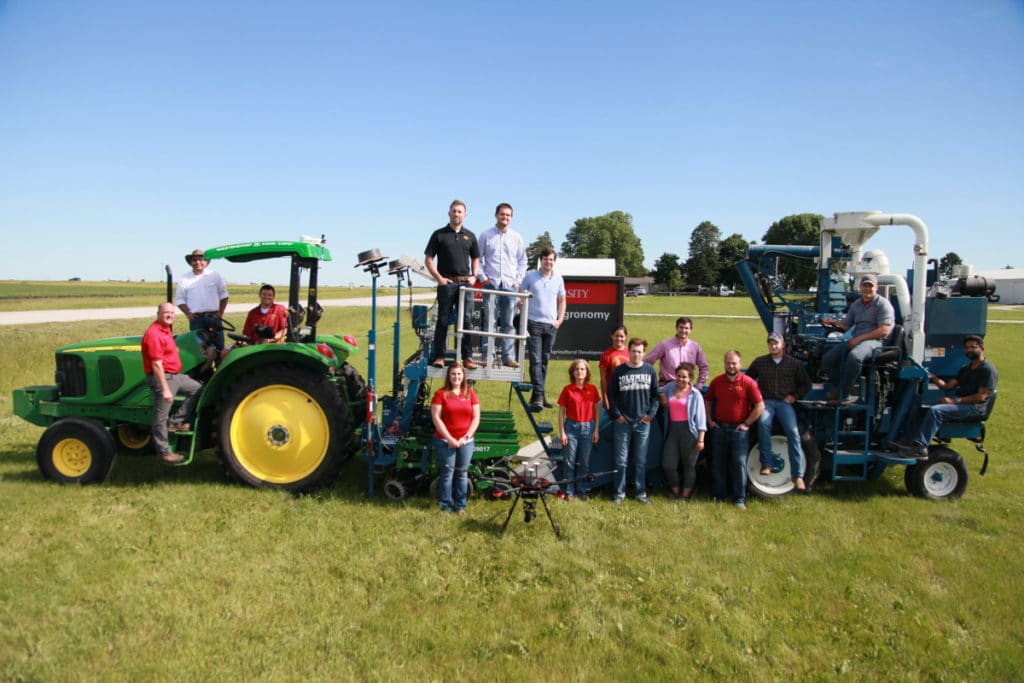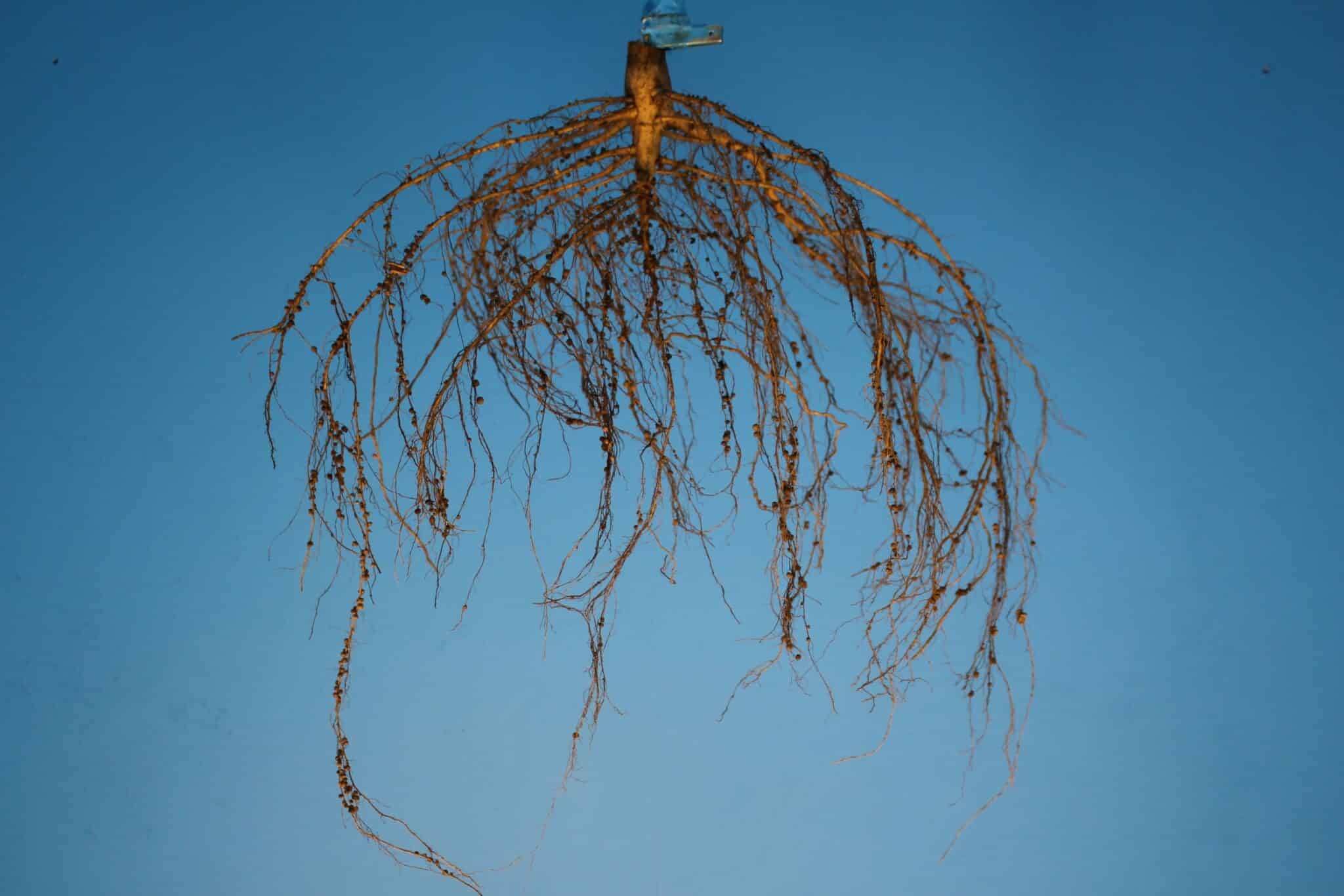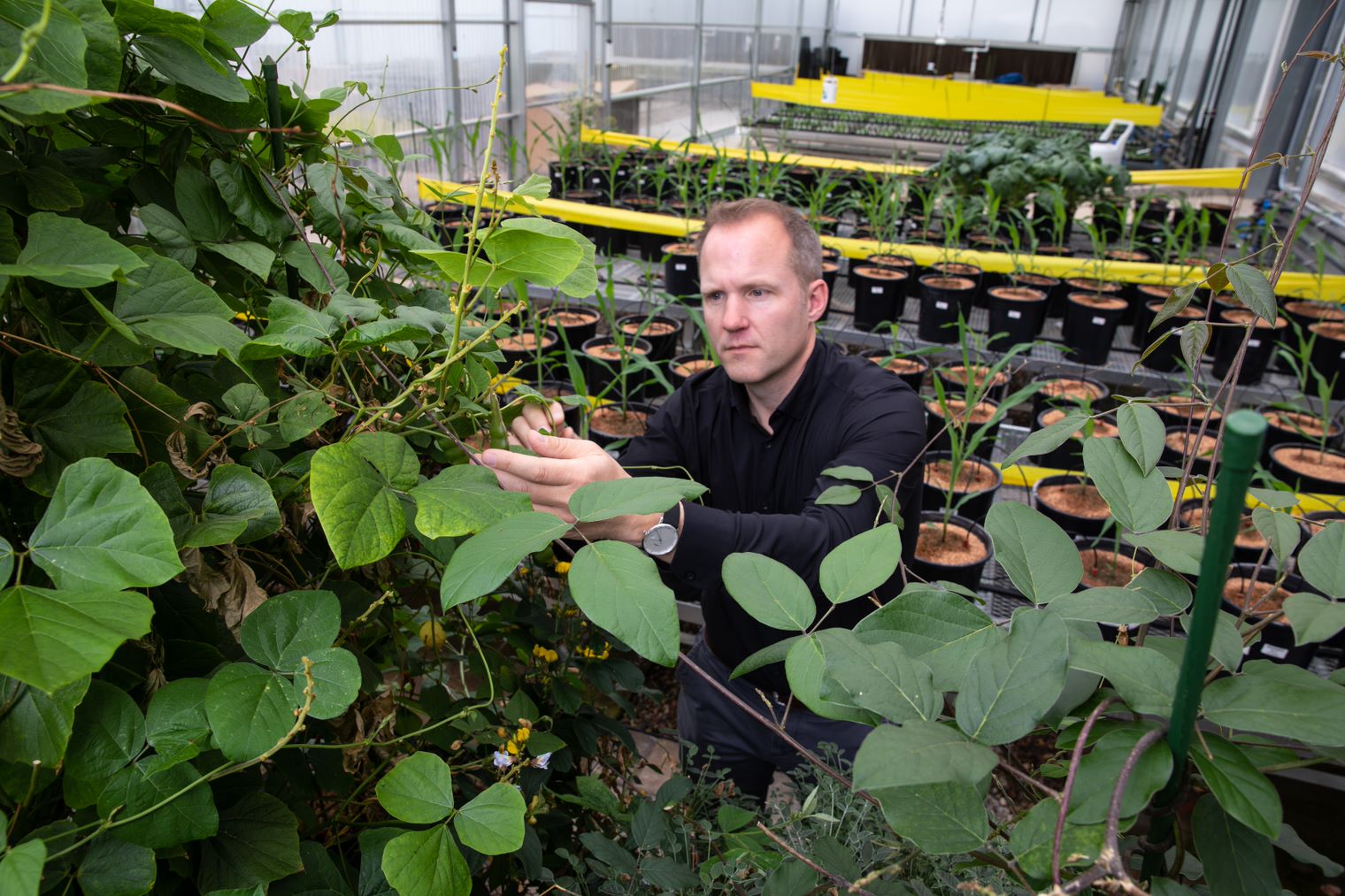A revolution in soybean breeding for root traits has begun, with the presentation of a successful new ‘pipeline’ involving machine learning and computer vision.
When crop breeders long ago learned of single nucleotide polymorphisms — SNPs, differences in a single building block/nucleotide such as cytosine in place of thymine, in a given stretch of DNA — they have wanted to be able to correlate these differences with plant traits, taking breeding to an entirely new level.
Now, building on past achievements in the field, a team of scientists in the departments of Agronomy and Mechanical Engineering at Iowa State University and at the U.S. Department of Agriculture (USDA) Agricultural Research Service have published results on their new soybean breeding framework that links genetic information with root traits using computer vision and machine learning (ML) tools.
Project co-lead Asheesh K. Singh (a professor in the Department of Agronomy at Iowa State University) notes that some of these methods have already been used with tremendous success to measure crop traits or predict yield.
“More mainstream deployment has happened in the past five to six years,” he explains. “However, in terms of the study of roots for plant breeding applications, our project is among the first to establish a user-friendly ‘pipeline’ built on ML tools and then use the pipeline to study traits in a way, and at a scale, that was previously difficult.”
Manitoba’s Kevin Falk (who was Singh’s PhD student) and Zaki Jubery (scientist in the group of co-lead Baskar Ganapathysubramanian) and their colleagues imaged thousands of soybean root systems and used ML to measure root traits and correlate differences in root system architecture (RSA) to the genome of the plants. Those plants with RSA that enables greater drought tolerance and nutrient acquisition are of obviously of particular interest in breeding for better plant performance and higher yield.
“Root phenotype combined with SNP-based genotype allowed us to correlate genetics with morphology. It’s a first step that could allow breeders to select for root morphologies, such as drought-tolerant root systems, using genomic prediction-based approaches,” says Falk, integrated field scientist for Corteva Agriscience.
“Drought has hit the western Canadian soybean grower hard in the last few years, and the best way forward is drought-tolerant soybeans. But as with all of plant breeding, even with genomic technology, it’s going to be a long haul.”
Root System Architecture
Because RSA affects water/nutrient acquisition, plant-microbe interaction, nutrient storage and structural anchorage of a plant, it can greatly impact yield. Soybean taproots that elongate at a faster rate tend to burrow more deeply into the soil profile, possess increased root densities at depth, and can therefore better access water in dry soils. However, for optimum plant performance, these deep roots need to be complemented with shallow lateral roots which enable the plant to efficiently forage for soil-immobile nutrients. At this point in time, more research is needed to understand the optimum RSA in a broad range of growing conditions.
In any case, although RSA can greatly impact yield, crop breeding programs have rarely used it as a direct selection criterion. Instead, RSA has been indirectly selected for in plants that perform well in general and/or perform well under dry conditions. Direct selection for RSA has not occurred because the traits involved with it are complex, as is the measurement of these traits and the effects of environmental factors. In addition, there have been a large number of root traits identified through different studies and software programs have further complicated the identification of opportunities to select the most informative and relevant suite of traits.
“Root traits are among the most difficult to study in plant sciences,” Singh explains. “While root researchers have achieved success in trait identification, there are still challenges in the field-based root trait studies involving large number of varieties. It’s hard to dig up field plants without disruption, and current sensors are not sensitive enough to do remote sensing in row crops. So, it requires a very committed team to do long hours of work.”

Sourcing Genetics
To begin the project, members of the team first reviewed the research on root morphology. They then developed ‘informative’ root trait categories which go beyond individual root traits to describe differing root shapes and other broad characteristics.
The team chose 292 soybean varieties from the diverse soybean accessions held in the USDA core collection (primarily in maturity groups II and III) and from a subset of the soybean Nested Association Mapping parents. These accessions were planted in controlled environment conditions and the roots were imaged 6, 9 and 12 days after germination. Computer vision and ML methods were used to measure root traits and accessions with similar RSAs were categorized into eight groups.
Once the genetic and phenotypic (observable) analysis was finished, the team found there was genetic variability for root shape, length, number, mass and angle. The accessions were genetically diverse but there were, as one would expect, group-specific trends.
The team also found that groupings based on genetic analysis correlated with geographical origins. In addition, it’s clear that a large amount of the genotypes (which represent cultivars originating in the U.S.) lack genetic diversity for RSA traits.
How This will Change Soybean Breeding
Now that this project has been published, Singh believes it will begin to shift the traditional crop breeding focus from being solely focused on above-ground traits (easily observable and perceived as sufficient to understand and predict plant performance) to the whole plant.
“Focusing on above-ground traits is effective, but it completely misses the whole other world of plant roots and their anatomical, morphological and physiological traits,” he says. “Due to the technical difficulties and resource intensiveness of observing root traits, we have not put a lot of focus on them. But, with continual innovations in imaging platforms and computer vision/ML methods, the research community can overcome several of these challenges.”
Now that he and his colleagues have exposed the extent of genetic diversity that exists in important root traits — and found that the majority of North American soybean varieties are limited in root trait diversity — Singh believes it’s imperative for researchers to investigate if root traits have been optimized in commercial varieties, or if there is a huge untapped resource of root trait variation out there.
“We also need to determine how the root traits influence yield and other important traits,” he says. “Think of this as matching the chassis to engine motor so both work in unison to deliver top and consistent speeds.”
Seyed Vahid Mirnezami, who was part of the project during his PhD studies and currently works in Bayer’s Crop Science division in Missouri, says ML and deep learning coupled with image processing tools could also be applied to measure other crop traits, and above-ground traits could be correlated with the root traits. Indeed, Singh’s PhD student Clayton Carley is now working on this.
The team is also conducting more genetic studies, building their understanding of the optimal combination of RSA traits and root nodulation, and exploring the connections between controlled environment results and field-based observations.











